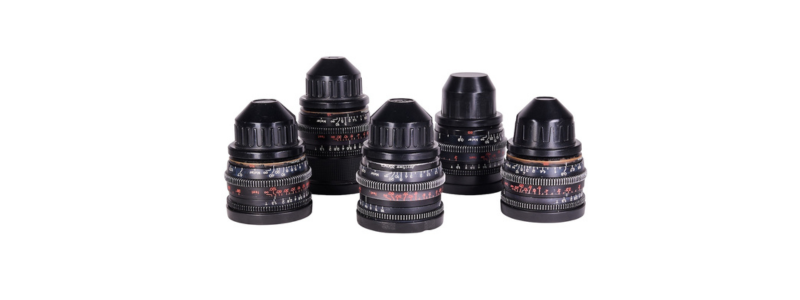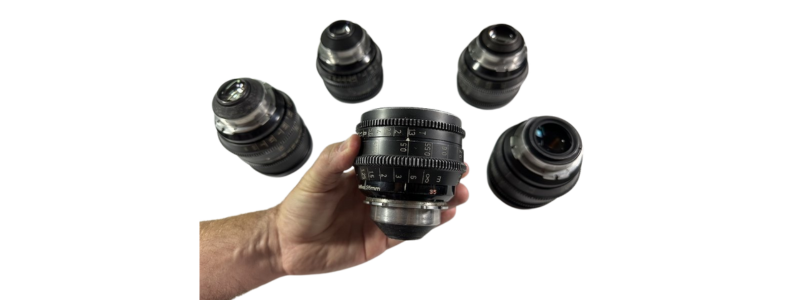Arri/Zeiss High Speeds: History, Versions and How to Identify Them 6/20/2025, 12:00:00 AM

The Legacy of Arri/Zeiss High Speeds: A Cinematic Evolution
There’s a reason filmmakers still chase down a set of Arri/Zeiss High Speeds, even decades after their debut. The story behind these iconic lenses isn’t just technical—it’s a journey through the evolution of cinematic vision itself. But here’s the twist: the name High Speeds wasn’t even official—at least, not at first.
What Are Arri/Zeiss High Speeds?
To understand why Arri/Zeiss High Speeds are so important, we need to start with what they are: a series of high-speed prime lenses designed by Carl Zeiss for professional cinema use. They offer exceptionally wide apertures—typically T1.4 or T1.3—making them perfect for low-light shooting and creating beautiful, shallow depth of field.
But more than that, Arri/Zeiss High Speeds helped define the look of film in the 70s, 80s, and 90s. Their soft bokeh, crisp center sharpness, and subtle flaring made them the go-to lenses for cinema legends.
The Name That Was Never Official
Here’s where it gets interesting. Zeiss never called these lenses “High Speeds.” The name was popularized by users and rental houses to distinguish these faster lenses from Zeiss’s slower “Standard Speeds,” which topped out at T2.1.
It wasn’t until 2012 that Zeiss officially used the term Super Speed, and that was for their CP.2 line—not the original primes that filmmakers were already calling High Speeds. So when people talk about “Arri/Zeiss High Speeds,” they’re usually referring to the original high-speed primes made between the mid-70s and mid-90s.
The Evolution of Arri/ Zeiss High Speeds
The Arri/Zeiss High Speeds didn’t come out all at once. They evolved through multiple versions, each with subtle but meaningful changes. Let’s break down the main generations.
Zeiss “B-Speeds” (Mid-1970s)
Often referred to as B-Speeds because of their Arri Bayonet mount (B-mount), this first generation set a new bar for lens speed with a T1.4 maximum aperture.
Key traits:
-
No factory focus or iris gears
-
Triangular aperture (distinctive bokeh when stopped down)
-
Focus rotation: approx. 180°
-
Engraved f-stop markings (not T-stops)
-
Focal lengths: 18mm, 25mm, 35mm, 50mm, 85mm
These lenses were pioneers. They included aspherical elements and the early Zeiss T* coating for better contrast. The triangular bokeh they produced became a signature in many films from the era.
Mk I High Speeds (Mid-1980s)
The first major redesign of the original high-speed line introduced mechanical upgrades while keeping most of the original optics intact for the wide-angle lenses.
Upgrades:
-
Switch to Arri PL mount
-
Factory-installed focus gears
-
Standardized 80mm front diameter
-
Maximum aperture improved to T1.3
-
Knurled iris ring (but still no gear)
-
Focus rotation remained around 180°
While the 18mm, 25mm, and 35mm maintained their original glass, the 50mm and 85mm were optically updated.
Mk I “Expanded Scale” (Late 1980s)
This sub-version of the Mk I offered a full focus rotation (nearly 360°), allowing both metric and imperial focus scales on the same lens without clutter. That was the only change—everything else remained identical to the Mk I.
For focus pullers, this meant better precision and easier use on set.

Mk II High Speeds (Early 1990s)
This generation brought a long-awaited feature: the factory iris gear. That seemingly small detail made them much more compatible with follow focus systems and standard rig setups.
Additional note:
Zeiss also added a 65mm focal length to the set during this update.
All other features—PL mount, full focus rotation, and T1.3 aperture—remained the same.

Mk III High Speeds (Mid-1990s)
The final iteration made a minor but practical update: re-orienting the focus scale engravings so they could be read upright when mounted to a camera. However, this meant users had to choose between metric OR imperial markings, not both.
Despite no optical improvements, the Mk III has become the most sought-after version due to its usability on modern sets.

Why Filmmakers Still Love Arri/Zeiss High Speeds
Even with all the modern lens options, Arri/Zeiss High Speeds remain incredibly popular in cinematography. Why?
-
T1.3 Aperture
Allows for exceptional low-light performance and shallow depth of field. -
Timeless Rendering
Their subtle contrast and warm tones create an image that’s cinematic without being clinical. -
Compact and Lightweight
Compared to modern cine lenses, High Speeds are easy to rig and handle. -
Affordable Legacy
For independent filmmakers and rental houses, owning a set is a smart long-term investment. -
Proven on Set
Used on films like Taxi Driver, The Shining, and Full Metal Jacket, their reputation is well-earned.
How to Identify Authentic Arri/Zeiss High Speeds
With so many modified and mislabeled lenses on the market, spotting genuine High Speeds can be tricky. Here's a quick guide:
Version |
Max T-Stop |
Focus Rotation |
Iris Gear |
Focus Gear |
Scale Type |
|---|---|---|---|---|---|
B-Speed |
T1.4 |
180° |
❌ |
❌ |
Metric + Imperial |
Mk I |
T1.3 |
180° |
❌ |
✅ |
Metric + Imperial |
Mk I Exp. |
T1.3 |
Full |
❌ |
✅ |
Metric + Imperial |
Mk II |
T1.3 |
Full |
✅ |
✅ |
Metric + Imperial |
Mk III |
T1.3 |
Full |
✅ |
✅ |
Metric OR Imperial |
If you ever see triangle-shaped bokeh when the lens is stopped down, you’re probably looking at an original B-Speed.
The Enduring Legacy
Arri/Zeiss High Speeds represent more than just technical specs—they’re a testament to engineering excellence and creative vision. Although replaced by newer lines like the Master Primes, they still carry a unique aesthetic that modern glass can’t replicate.
For those entering the world of lenses for cinema, understanding the history and design of Arri/Zeiss High Speeds is an essential first step. These lenses aren’t just tools—they’re part of the visual language of cinema.
And maybe now, the next time someone throws around the term "High Speed," you'll know exactly what they mean—and why it matters.
Looking to learn more about lenses or expand your cine toolkit? Stick around—this blog has plenty more insights to come.
Copyright © Cinelenses S.L 2025.







